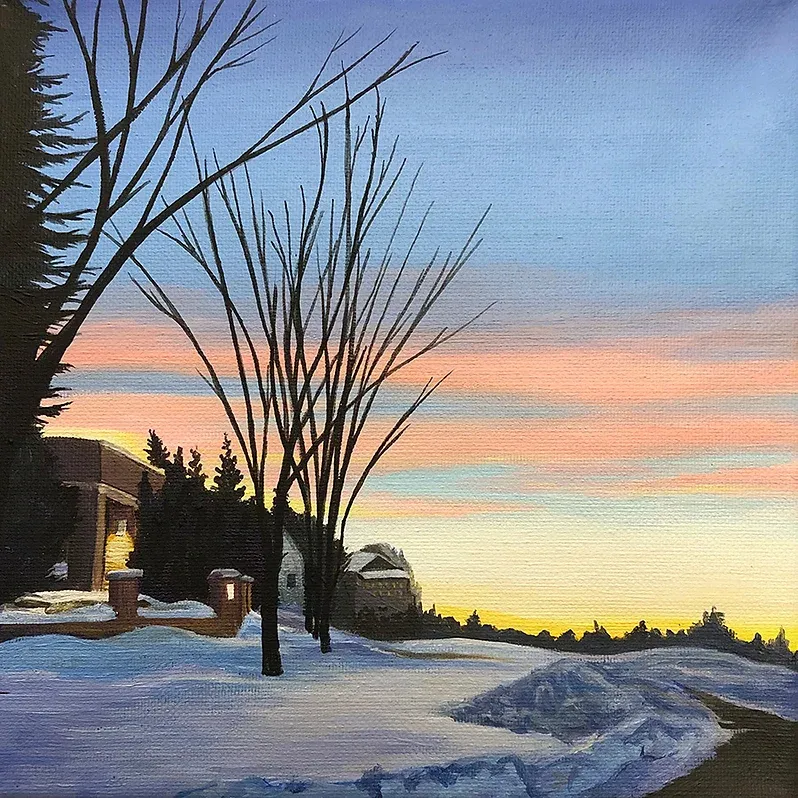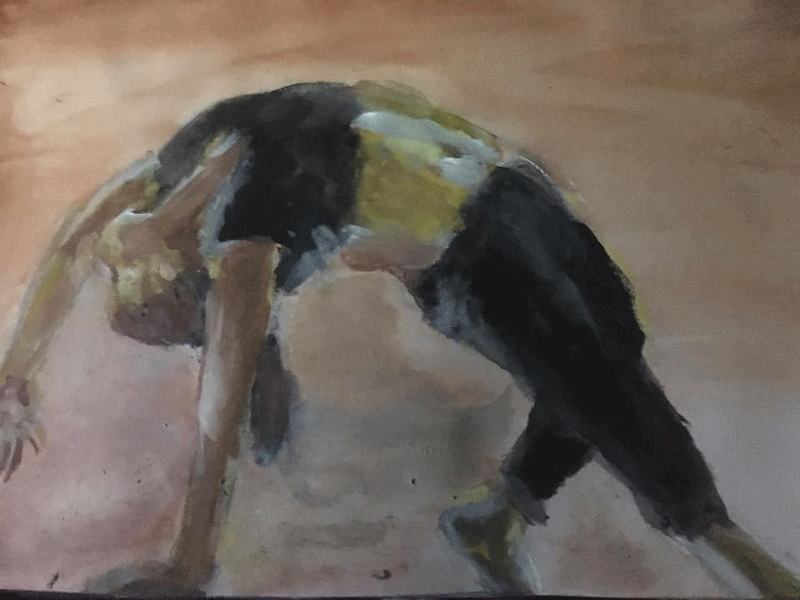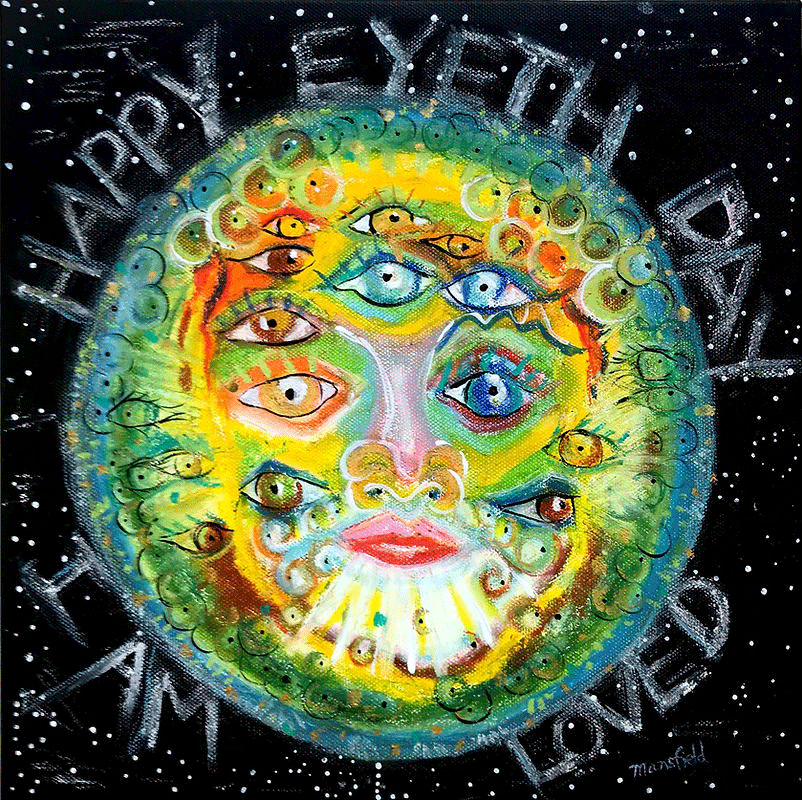Every year on December 3rd, the International Day of Persons with Disabilities is observed. The day focuses on improving the “rights and well-being of persons with disabilities in all spheres of society and development,” which includes awareness of the experiences of disabled people and increased accessibility throughout “political, social, economic and cultural life.”
In December of 2021, The Outsiders and Others Art Gallery in Vancouver hosted an exhibition called What Disability?!? to mark the day, but little did they know, that would be the first version of the exhibit. Version 2.0 of the exhibit would span most of the following January and is still available online for viewing.

The eight artists (of the 16 in the first exhibit) each have different stories to tell based on their life experiences.
A former worker in the disability support sector, Ysabelle Vatour is an artist who is legally blind and sees purely in black and white. Vatour’s Rockstar shows someone who appears to be dancing, bent backwards, with an arm and leg outstretched in front of a sunset-coloured background.
The painting’s style represents the way she sees the world, according to her artist’s statement: “My visual impairment affects the way I see light and colours…because I can’t see colours, I am more interested in a person’s energy, and what lies inside waiting to be expressed.”

The “rockstar” in her painting exudes free energy, a person in movement. While the rockstar may have blurred facial features, Yatour thinks that “one minor stroke can change the expression on someone’s face completely.” Yatour believes accessibility is not adequately considered –and reflecting the United Nations Sustainable Development Goal for Industry, Innovation, and Infrastructure –must incorporate some form of innovation to work.
To continue, Yaho Fiwchuk, a self-educated artist living with mental illness and diabetes, sometimes reflects their disability in their art. “I work when I’m not psychotic although traces of psychoses are found in some of my work which makes it very personal, as well as original," says the artist’s statement. Fiwchuk’s rainbow splashes and dark dots of ink/acrylic on paper are unique–they blend and outline one another at the same time.
Additionally, there’s also artwork from Deaf artist Ellen Mansfield, who grew up without learning sign language or using interpreters, but immersed herself in Deaf culture and sign language upon moving to Maryland. It’s important to note that many people (especially in the Deaf community) do not consider deafness as a disability, but rather as a culture with its own language(s), history, and community that has been fostered over generations.

Mansfield’s piece in the exhibit, The Eyeth Day, shows a globe with a face and multiple sets of eyes surrounded by the words, “Happy Eyeth Day” and “I Am Loved.” In her artist’s statement for the exhibit, Mansfield says that “by celebrating the sign language and culture of Deaf people, I can affirm our unique ways of being in the world."
Yatour, Fiwchuk, and Mansfield’s art incorporate their own unique viewpoints to create novel and thought-provoking work. There are so many different aspects to a disability, and prioritizing inclusivity in our perception of each individual’s experience is crucial, both in understanding art and the individual themself.
The What Disability?!? art exhibit exemplifies the UN Sustainable Development Goals for Reduced Inequalities by highlighting art informed by personal experiences of disability. By raising awareness and promoting innovation, the art opens a dialogue about where accessibility and representation could be improved for disabled people while allowing each individual’s talents and ideas to shine through.
This topic was especially relevant to 2021’s International Day of Persons with Disabilities, as the theme for that year was “leadership and participation of persons with disabilities toward an inclusive, accessible and sustainable post-COVID-19 world.” Hosting events that focus on amplifying the voices of children with disabilities post-COVID-19 and gender-responsive disability inclusion, the UN receives multiple perspectives on what accessibility and leadership look like for different disabled people.
To view version 2.0 of the What Disability?!? the exhibit, click here. Read the United Nations Disability Inclusion Strategy for information about improving disability inclusion. To learn more about the International Day of Persons with Disabilities, click here.
